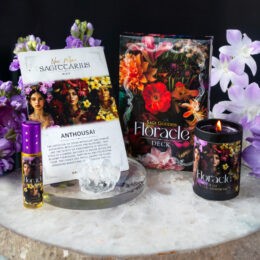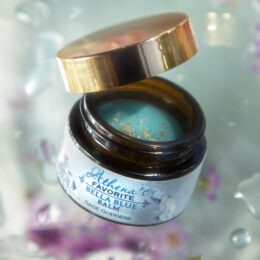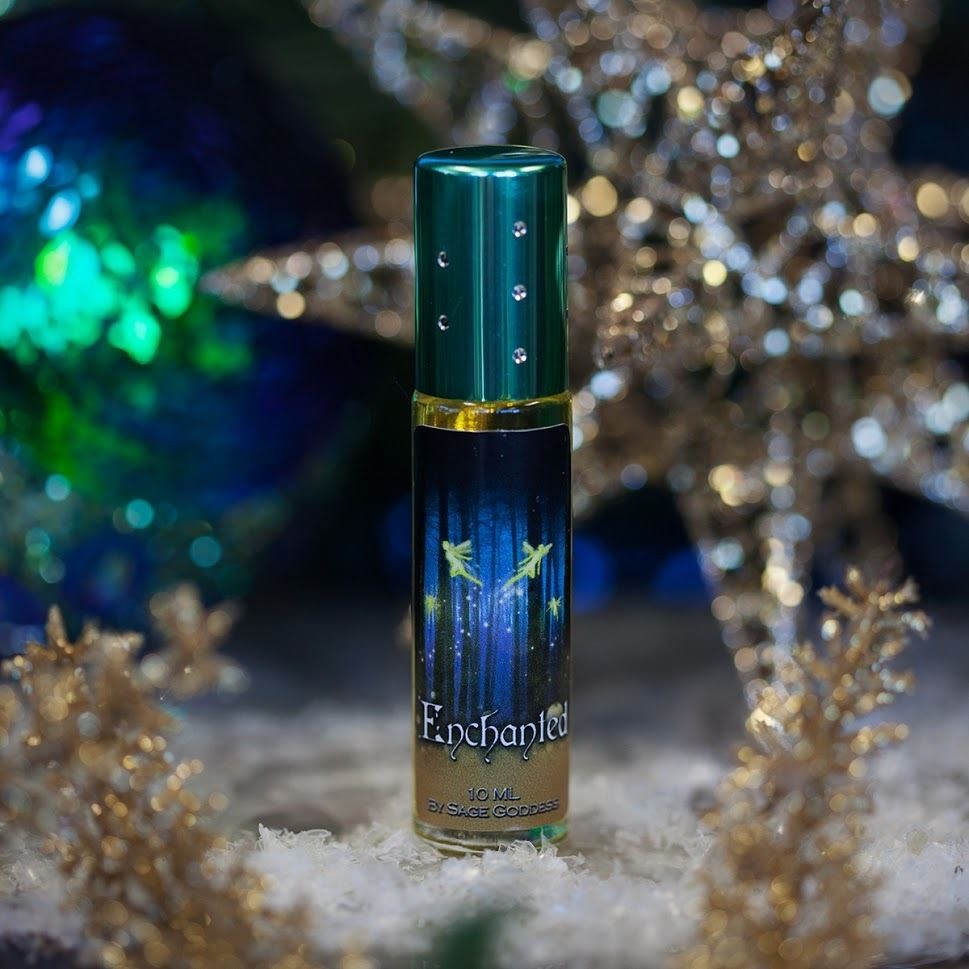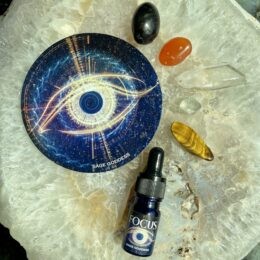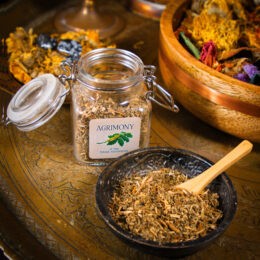The Magic of Sumeria
Part 1
 Happy New Year, and welcome to 2018! I am so excited to enter the World of Magic with you as we embark upon our new 12-month curriculum of classes. This year, to keep things fresh and interesting, I will provide you with new class content at regular points throughout the month. We’ll let you know on Facebook when we’ve added something new! Visit this page regularly to expand your awareness and deepen your knowledge in preparation for our monthly class.
Happy New Year, and welcome to 2018! I am so excited to enter the World of Magic with you as we embark upon our new 12-month curriculum of classes. This year, to keep things fresh and interesting, I will provide you with new class content at regular points throughout the month. We’ll let you know on Facebook when we’ve added something new! Visit this page regularly to expand your awareness and deepen your knowledge in preparation for our monthly class.
Welcome to the first stop on our journey around the World of Magic. I am beyond excited to share the magic of Sumeria, the cradle of history, with you. To understand Sumerian magic, we need to first see life from ancient Sumerian perspective. In Mesopotamia, the gods and goddess came first, and humankind was placed on the Earth to serve them. There was equality between the sexes, and also between gods and goddesses, an empowering example of balance between masculine and feminine energies. These salt-of-the-earth people maintained a three-fold economy, agriculture, animal husbandry, and fishing (including exploration and trade). They valued civility, service, peaceful negotiations, devotion, sacrifice, sensuality, the art of love, and reverence. The intact family was central to Sumerian society, and the household was synonymous with the temple, and the woman of the house was the Great Goddess herself.
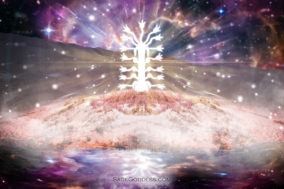 Wisdom was of the utmost importance to ancient Sumerians. Wisdom was not of the moral sort, rather, it was the knowledge of the gods and goddesses, ritual and invocations. Ritual was the highest priority, and every act was ritualized, there was no division between the mundane and the spiritual. The literal laying-on of hands and the magic of touch was a healing life force exchange between humans, and could signify the blessings or curses from the hands of the gods and goddesses. The Great Temple received offerings three times a day, everyday, and more at great moon festivals. The moon was the symbol of the sacred in the Heavens, and the entire society of Sumeria was built around a moon cult. Women harness the power of the moon within, and the origin of ritualistic observations comes from the relationship between the menses and the lunar phases. Seclusion during menses was a way to harness and contain the immense power of menstruation. We know that when a woman is on her Moon, she is especially sensitive, psychic, intuitive, and spiritually connected. She is closer to the Mystery.
Wisdom was of the utmost importance to ancient Sumerians. Wisdom was not of the moral sort, rather, it was the knowledge of the gods and goddesses, ritual and invocations. Ritual was the highest priority, and every act was ritualized, there was no division between the mundane and the spiritual. The literal laying-on of hands and the magic of touch was a healing life force exchange between humans, and could signify the blessings or curses from the hands of the gods and goddesses. The Great Temple received offerings three times a day, everyday, and more at great moon festivals. The moon was the symbol of the sacred in the Heavens, and the entire society of Sumeria was built around a moon cult. Women harness the power of the moon within, and the origin of ritualistic observations comes from the relationship between the menses and the lunar phases. Seclusion during menses was a way to harness and contain the immense power of menstruation. We know that when a woman is on her Moon, she is especially sensitive, psychic, intuitive, and spiritually connected. She is closer to the Mystery.
The Sumerians were the first to document disease and treatment, and all procedures and remedies were performed in the name of the gods. Sumerian Cuneiform was the first written language, and Enheduanna, the High Priestess of Sumeria, is the first documented author and poet. Enheduanna, a devotee of Inanna, brought rise to the first Cult of the Goddess, which became the foundation for all goddess worshipping cultures thereafter. Inanna is the Queen of the Heavens, later known as Ishtar, Venus, and Aphrodite, exalted above all other gods and goddesses. She is both the container and that which is contained; both masculine and feminine in divine nature. Enheduanna’s hymns to Inanna reawaken us as Divine women of the Goddess, and acknowledge the value and inherent Divinity of men. Sumeria teaches us much about our relationships with wisdom, worship, nature, Divinity, feminine power, and the balance of energies within and without.
Part 2
Inanna and Enheduanna
She is the the container, and that which is contained.
She is the threshold to the storehouse.
She is the reed doorway that opens to the sacred.
She the reed, the intermediary between the land and the watery beyond.
She is the reed column which connects earth with heaven.
Upon her crown she wears the ground plan of heaven and earth.
She holds the duality of the cosmic matrix within her.
Darkness and Light
Compassion and Fury
She is the divine masculine,
She is the divine feminine
She is androgyny
Inanna
Daughter of the Moon
Whose earthly carnation is Enheduanna;
High Priestess of Sumeria
Wife of Nanna, the Moon God
Daughter of Sargon, the first Emperor of Akkad
And the Mother of Literature
Who is Inanna, also known as Ishtar, Venus, and Aphrodite? Her name translates to “The Moon”, Love, Procreation. Imagine the earliest depiction of Inanna: a bowl. She is the container. She is the contained. She is both masculine and feminine. Within her, all complexities and dualities have a place. She is the ground plan of Earth and Heaven, and she is the energy which gives animation to what we understand as reality.
The Inanna myth holds all the goddess archetypes: primordial nature, serpent energy, and Lilith; the taming of nature and coming of age; the rise of power and assumption of status; the Great Rite; a horrific descent into the underworld and subsequent resurrection; and the reconciliation of the Lilith aspect and dark moon energy. Inanna is the archetype for all goddess worshiping cultures, and she emcompasses all gods and goddesses.
The ancient hymns to Inanna, the Queen of Heaven, were written by Enheduanna, the High Priestess of Sumeria, more than two-thousand years before the Old Testament. To know Inanna, the Goddess of Heaven, is to know Enheduanna.
Enheduanna is the mother of poetry and writing; the first named historical author. She was a priestess, poet, princess, and rhetorician in 2300 BCE. Her standout work is The Exaltation of Inanna, a body of hymns sung in honor of the goddess. Enheduanna’s fully rendered collection of cuneiform tablets were found in the ruins of Nippur, Sumer’s spiritual and cultural center, between the years 1889-1900, and spent the better part of the century divided between two institutions, the University of Pennsylvania and the Istanbul Museum of the Ancient Orient. After decades of translation and logistical standstills, the texts that comprise over 400 lines of verse, have slowly revealed themselves to a modern audience.
Part 3
The Magic of Sumerian Ritual
Lunar festivals of the High Priestess (offerings and rites to the moon) were held on the first, seventh and fifteenth day of the month – on the day of the new moon, the seventh waxing day, and the full moon. The waning phase of the month was not acknowledged with public festival.
 The ancestral tradition of moon worship began first with the observation of the menses in relationship to the passage of the moon. The origin of ritual lies in the ancient observation of menstrual seclusion. The administered taboos of menstruation seclusion is that a woman is not to touch water, not to touch the earth, nor to see the light. These restrictions intended to harness and contain the immense power of menstruation. These observations grew into the first rituals – in intimate wedlock with the phases of the moon. Special offerings for the festivals included all consumables,
The ancestral tradition of moon worship began first with the observation of the menses in relationship to the passage of the moon. The origin of ritual lies in the ancient observation of menstrual seclusion. The administered taboos of menstruation seclusion is that a woman is not to touch water, not to touch the earth, nor to see the light. These restrictions intended to harness and contain the immense power of menstruation. These observations grew into the first rituals – in intimate wedlock with the phases of the moon. Special offerings for the festivals included all consumables,
like cakes, oil, and beer. Large and small cattle were
sacrificed and ritual purifications/cleansings
were made. Special garments, like festival sandals, were worn.
The number seven is considered significant in many traditions. It is associated with Divine perfection, and finding the magical place between both worlds (ife and death; material and spiritual). In Sumeria, the waxing half moon, or seventh day moon, was associated with the chariot. The chariot is symbolic identification of the half moon with the two semi-circular blocks of wood joined together to make a solid chariot wheel. Chariots linked with forward motion and victory through the union of opposites (union of the chariot, driver, and horses).
In Sumeria, the temple received offerings three times a day and these increased at the great moon festivals. Ritual absolution was the highest priority. There was no separation between mundane tasks and absolutions to the Gods. Everything was ritualized, from application of oils/herbs, to harvesting the wheat, to making offerings to the gods and goddesses. The Sumerians truly lived a life of ritual.
January Sabbatical Set
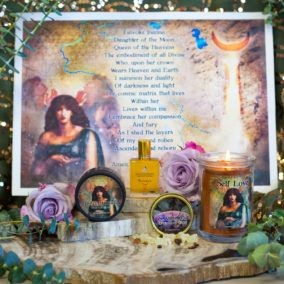 January’s Sabbatical set is filled with tools intentionally chosen to initiate you into the magic of Sumeria – to experience ritual for yourself, especially through intentional acts of self-love. This set was inspired by a gorgeous painting of Astarte, the Greek successor of Inanna, another face of Venus. These tools are intended for your very own self-love ritual – to annoint you with the abundance of love that you are, and inherently deserve. In the spirit of Sumerian devotion to ritual, love, and honor, I chose cedarwood, saffron, and myrrh as key notes for the jar candle and perfume. The sacred resin/herb blend will include honey amber resin. These herbs, oils, and resins were a special part of Sumerian ritual. The anointing of oil was very important, especially with cedar oil. Cedar came from the “Land of Cedars” and was imported into Sumeria – they clearly valued this ancient tree and made great effort to source it for themselves. Cedar was also used in incense and sacred bathing. Sumerians believed that carrying out rituals completely and righly created an immunity buffer, protecting them from harm, illness, and negative energy. As this set is inspired by Inanna/Venus, Friday, Venus’ day, is an extra magical day to enact ritual and honor the goddess of love. And, in Sumerian custom, make your offerings and actions of devotion as the Moon is waxing. I hope you will indulge in these timeless traditions, connecting with magic of Sumeria in the present.
January’s Sabbatical set is filled with tools intentionally chosen to initiate you into the magic of Sumeria – to experience ritual for yourself, especially through intentional acts of self-love. This set was inspired by a gorgeous painting of Astarte, the Greek successor of Inanna, another face of Venus. These tools are intended for your very own self-love ritual – to annoint you with the abundance of love that you are, and inherently deserve. In the spirit of Sumerian devotion to ritual, love, and honor, I chose cedarwood, saffron, and myrrh as key notes for the jar candle and perfume. The sacred resin/herb blend will include honey amber resin. These herbs, oils, and resins were a special part of Sumerian ritual. The anointing of oil was very important, especially with cedar oil. Cedar came from the “Land of Cedars” and was imported into Sumeria – they clearly valued this ancient tree and made great effort to source it for themselves. Cedar was also used in incense and sacred bathing. Sumerians believed that carrying out rituals completely and righly created an immunity buffer, protecting them from harm, illness, and negative energy. As this set is inspired by Inanna/Venus, Friday, Venus’ day, is an extra magical day to enact ritual and honor the goddess of love. And, in Sumerian custom, make your offerings and actions of devotion as the Moon is waxing. I hope you will indulge in these timeless traditions, connecting with magic of Sumeria in the present.
Journal Prompts:
- How do you define ritual?
- Are you committed to self-love rituals? If not, where will you start in creating one?
- Can you detect a consistent rhythm or vibration in everything you do?
- What simple thing can you do each day to bring more ritual into your life?
- How would you describe your relationship with the Moon? As she changes in the sky, do you feel changes within yourself?
- How do you honor yourself as a full and whole goddess? Do you have different self-love rituals for the bright and dark halves of your moon (self)?
Bonus Class Materials
First High Priestess Enheduanna’s words on menses ritual:
Blue Room meditation for helping you reconcile and heal relationships in a powerful way:
Blue Room Meditation from Sage Goddess on Vimeo.
Audio Meditation – A new perspective on protection:



